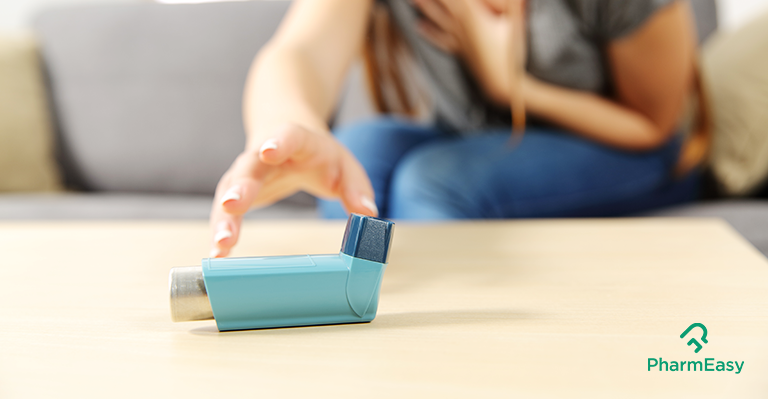Top 5 Things To Do When Having An Asthma Attack
By Dr. Nikita Toshi +2 more

Get,

to manage your symptom
Get your,


4 Cr+ families
benefitted

OTP sent to 9988776655



You’ve successfully subscribed to receive
doctor-approved tips on
Whatsapp

Get ready to feel your best.

Hi There,
Download the PharmEasy App now!!


Register to Avail the Offer
Send OTPBy continuing, you agree with our Privacy Policy and Terms and Conditions

Hi There,
Sign up on PharmEasy now!!
Trusted by 4 crore+ families

OTP sent to 9988776655



You have unlocked 25% off on medicines




Code: NU25
By Dr. Nikita Toshi +2 more
Table of Contents
An asthma attack is a sudden condition that is caused by the tightening of the muscles around the airways (also called Bronchospasm). During this condition, the airways get inflamed and above normal mucus get produced. All these factors cause shortness of breath, wheezing, etc.

Other noticeable symptoms that are observed during the asthma attack include:
This is difficult because the early signs are subtle and generally don’t hamper your everyday activities. But if you are alert and can identify these, you can save yourself from the worst attack and in some cases also prevent the occurrence of an attack.
Some of the early symptoms include:
However, if you get caught in a difficult situation like the worst attack, here are some right steps that you should take so that you can feel better faster.
Read More: Asthma Treatment – What You Need To Know
Disclaimer: The information provided here is for educational/awareness purposes only and is not intended to be a substitute for medical treatment by a healthcare professional and should not be relied upon to diagnose or treat any medical condition. The reader should consult a registered medical practitioner to determine the appropriateness of the information and before consuming any medication. PharmEasy does not provide any guarantee or warranty (express or implied) regarding the accuracy, adequacy, completeness, legality, reliability or usefulness of the information; and disclaims any liability arising thereof.
Links and product recommendations in the information provided here are advertisements of third-party products available on the website. PharmEasy does not make any representation on the accuracy or suitability of such products/services. Advertisements do not influence the editorial decisions or content. The information in this blog is subject to change without notice. The authors and administrators reserve the right to modify, add, or remove content without notification. It is your responsibility to review this disclaimer regularly for any changes.

Leave your comment...
Comments